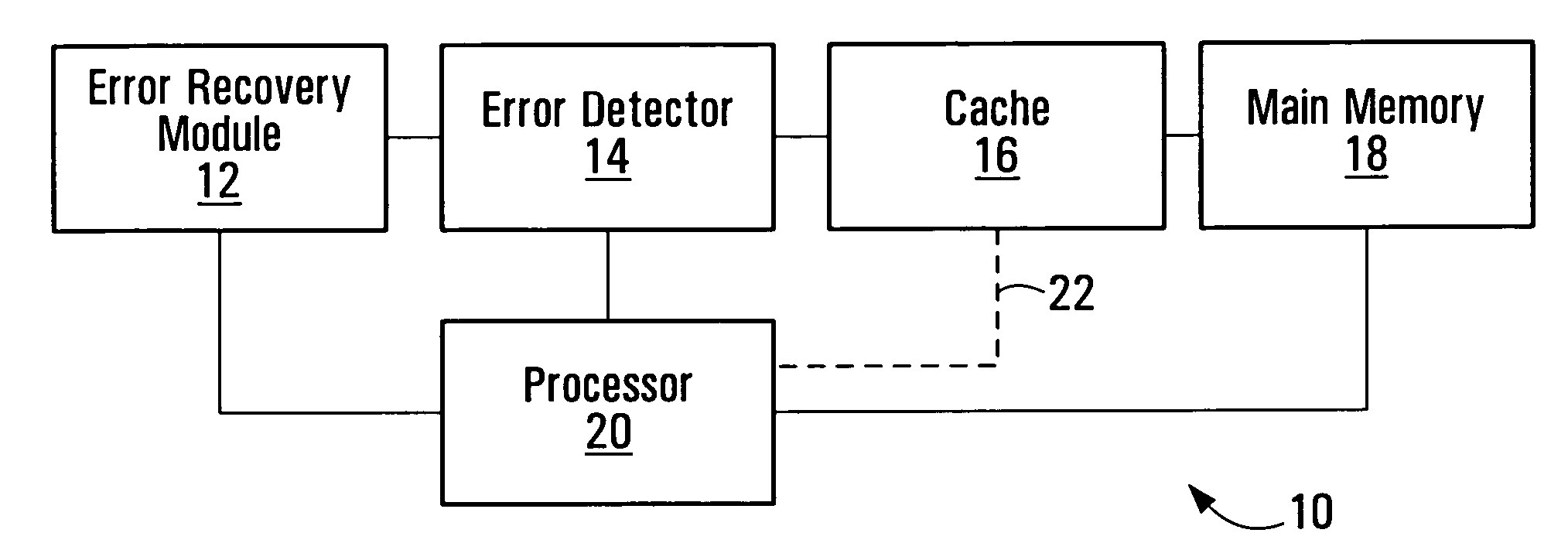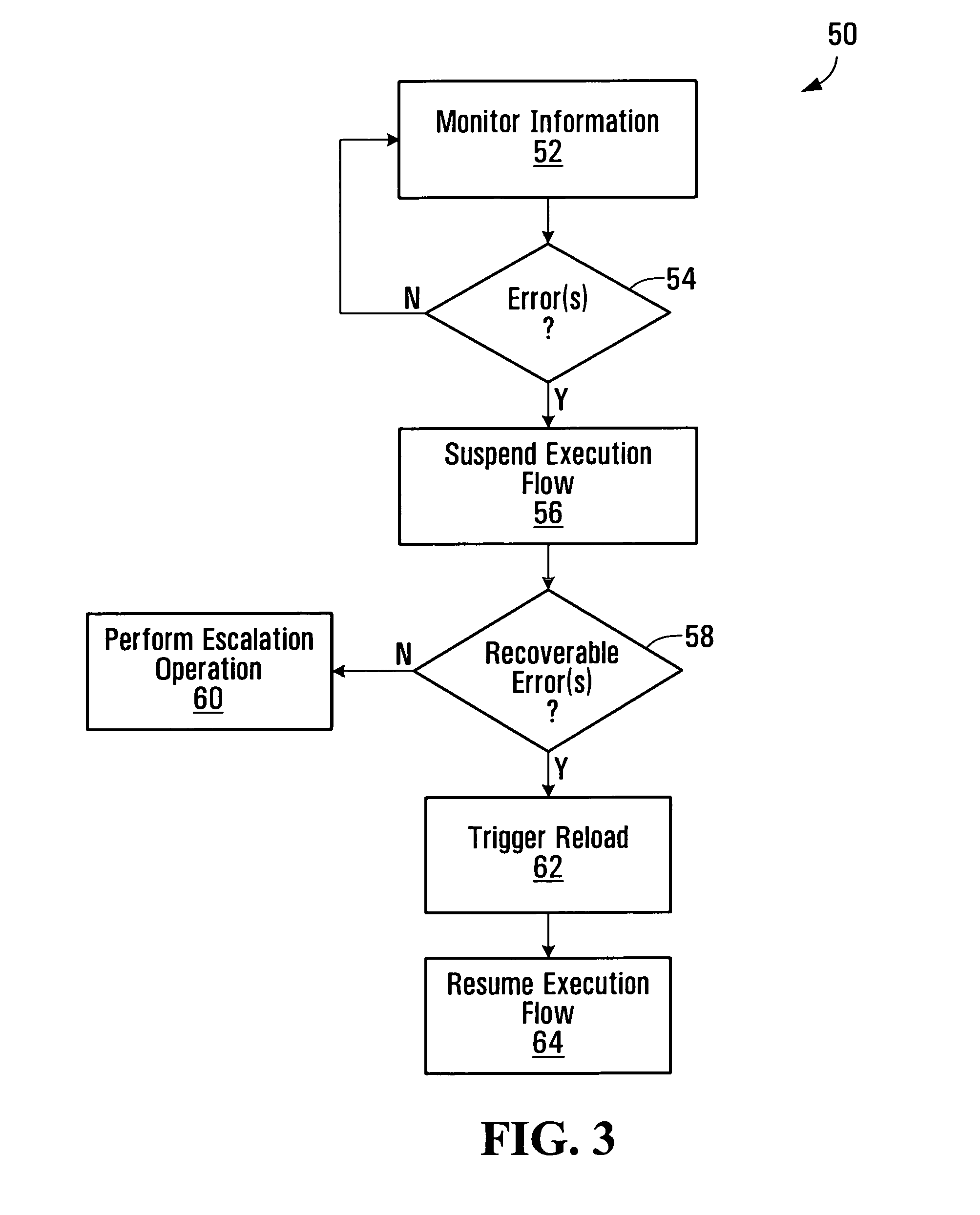Information error recovery apparatus and methods
a technology of information error and recovery apparatus, applied in error detection/correction, instruments, computing, etc., can solve problems such as errors, single- or multi-bit errors affecting l2 cache memory contents, and cache memory data or instruction contents can also be corrupted, so as to reduce downtime and maintenance resources
- Summary
- Abstract
- Description
- Claims
- Application Information
AI Technical Summary
Benefits of technology
Problems solved by technology
Method used
Image
Examples
Embodiment Construction
[0037]FIG. 1 is a block diagram of an electronic device in which embodiments of the invention may be implemented. The electronic device 10 includes a processor 20, an error recovery module 12 operatively coupled to the processor 20, an error detector 14 operatively coupled to the error recovery module 12 and to the processor 14, a cache 16 operatively coupled to the error detector 14, and a main memory 18 operatively coupled to the cache 16 and to the processor 20.
[0038]The processor 20 may be operatively coupled to the cache 16 directly, as shown at 22, or indirectly, through the error detector 14. The two types of interconnections represent different access and error detection schemes, as described in further detail below.
[0039]The device 10 represents one possible implementation of an embodiment of the invention. Other embodiments having fewer, further, or different components with similar or different interconnections are also contemplated. The invention is in no way limited to ...
PUM
 Login to View More
Login to View More Abstract
Description
Claims
Application Information
 Login to View More
Login to View More - R&D
- Intellectual Property
- Life Sciences
- Materials
- Tech Scout
- Unparalleled Data Quality
- Higher Quality Content
- 60% Fewer Hallucinations
Browse by: Latest US Patents, China's latest patents, Technical Efficacy Thesaurus, Application Domain, Technology Topic, Popular Technical Reports.
© 2025 PatSnap. All rights reserved.Legal|Privacy policy|Modern Slavery Act Transparency Statement|Sitemap|About US| Contact US: help@patsnap.com



